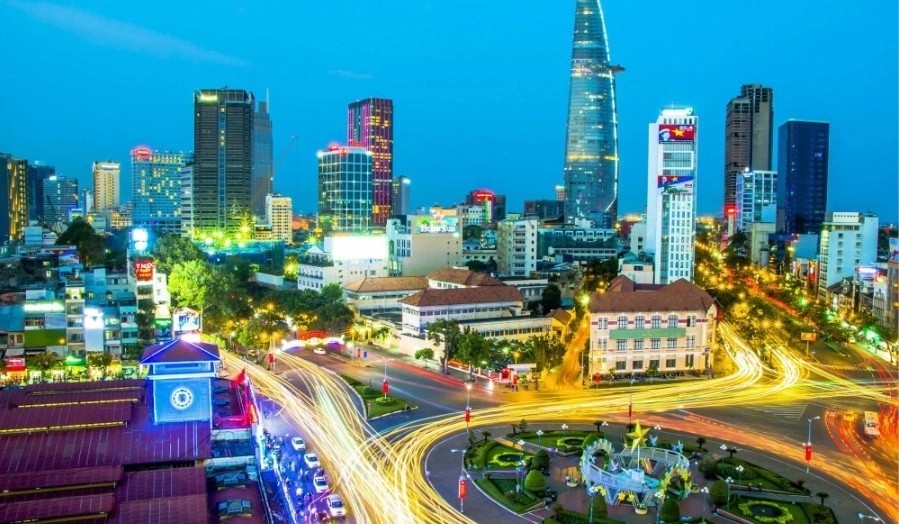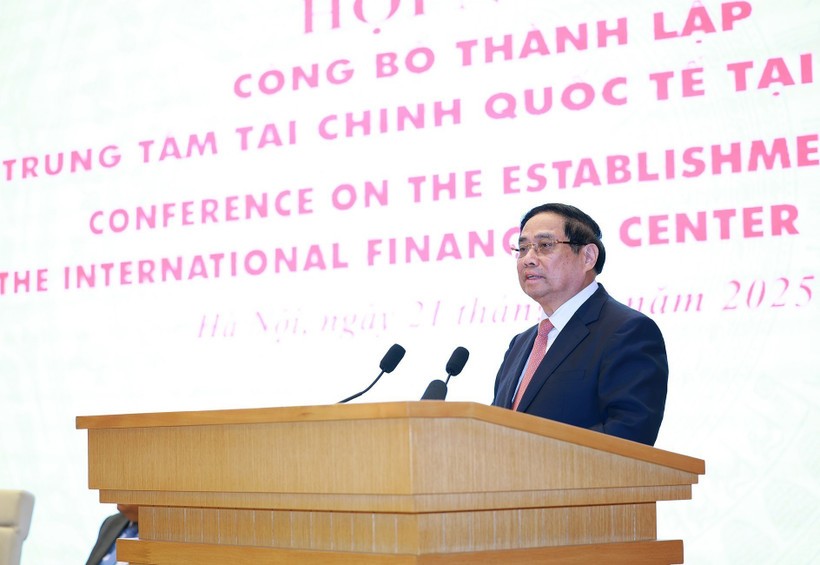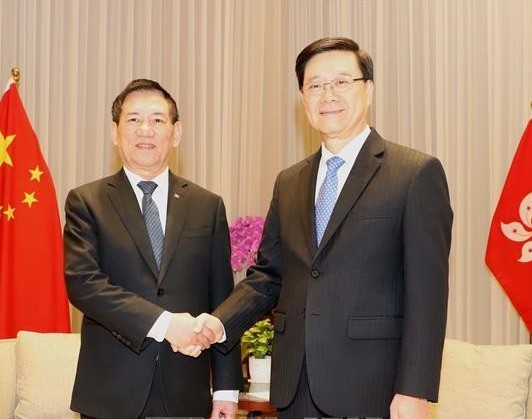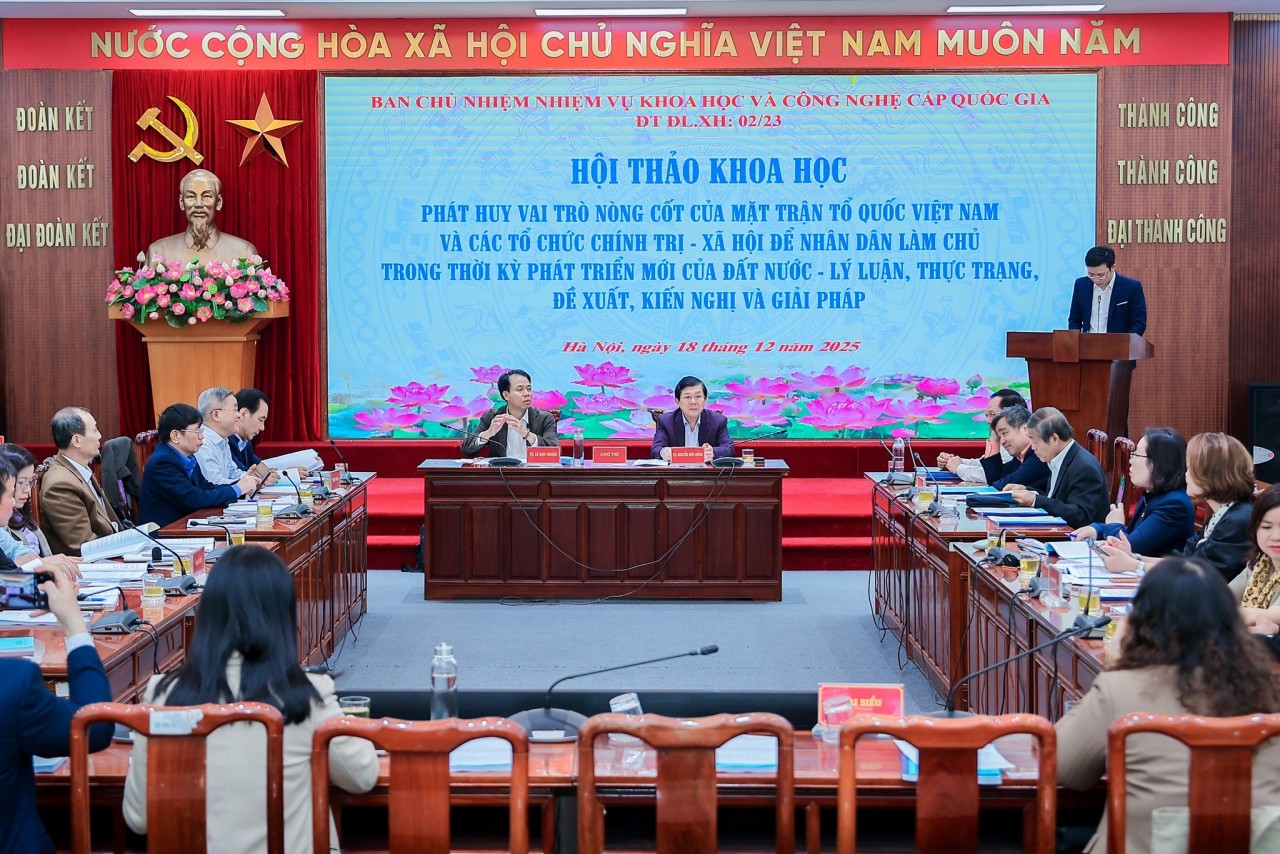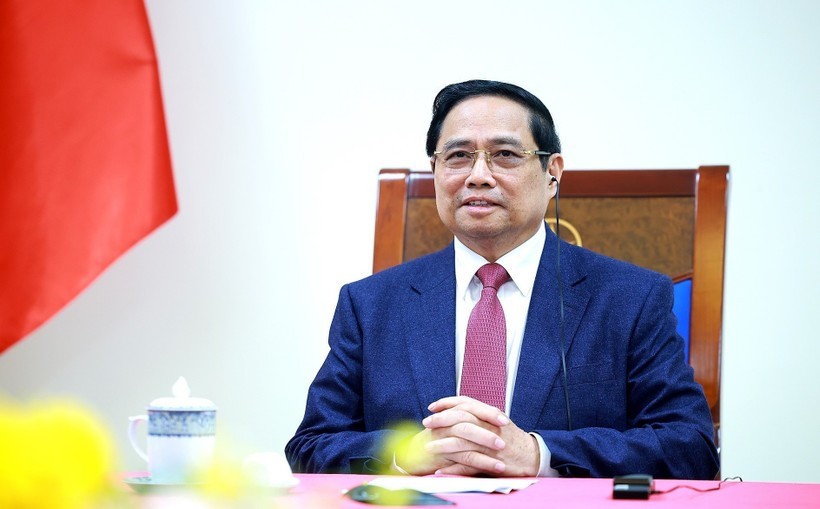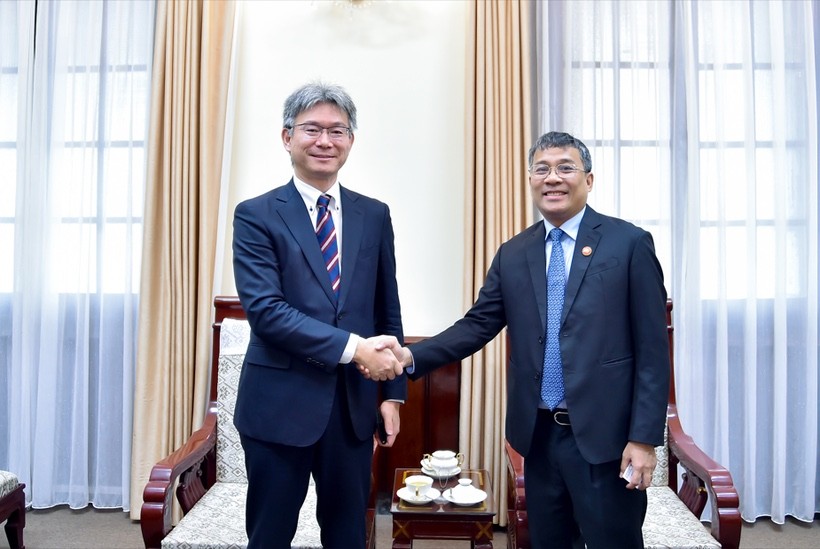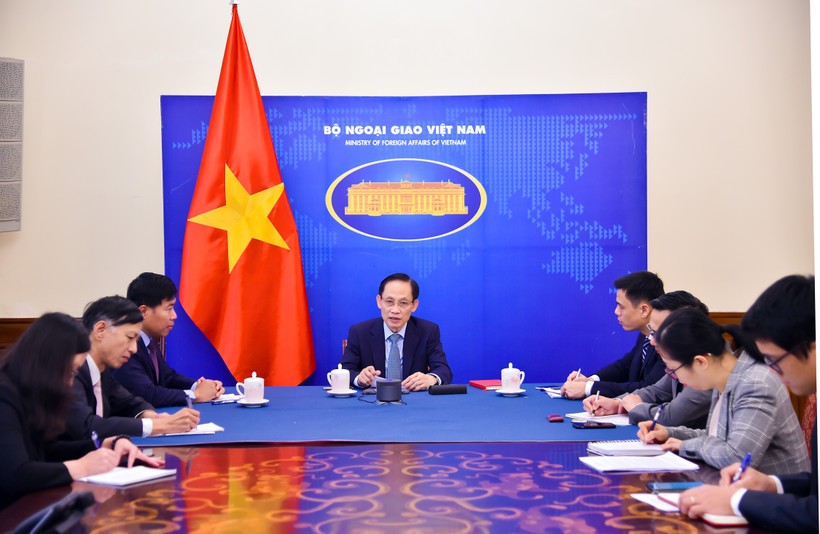| Vietnam News Today (Jul. 27) notable headlines NA leader praises Morocco–Vietnam Friendship Association's contributions to bilateral ties Vietnam still has room to achieve ambitious 8.5% growth target, say experts Vietnam, Hungary promote human resource training "Digital passport" for Vietnamese goods to reach global markets Vietnam's aviation among top 10 fastest-growing markets in Asia-Pacific: Boeing report NA Chairman meets Vietnamese community in Morocco Vietnam–Russia 70-year ties celebrated with vibrant cultural activities in Moscow Vietnam Summer Camp 2025 wraps up with strong diaspora ties Vietnam’s Tourist Ambassador to RoK honored for bridging travel cooperation |
 |
| An overview of the meeting between NA Chairman Tran Thanh Man and Mustapha El Ktiri, President of the Morocco–Vietnam Friendship Association (MVFA), in Rabat on the morning of July 26 (local time) (Photo: VNA) |
NA leader praises Morocco–Vietnam Friendship Association's contributions to bilateral ties
National Assembly (NA) Chairman Tran Thanh Man had a meeting with Mustapha El Ktiri, President of the Morocco–Vietnam Friendship Association (MVFA), in Rabat on the morning of July 26 (local time), as part of the Vietnamese top legislator's ongoing official visit to Morocco.
The NA Chairman expressed his pleasure at leading a high-level Vietnamese delegation to Morocco on behalf of the Party and State leaders, and at the opportunity to meet with the President and members of the association – long-time Moroccan friends who have consistently shown affection and solidarity with Vietnam.
He underlined the historical closeness between the two nations, despite geographical distance, noting their shared aspirations for freedom, peace, and national liberation.
During Vietnam’s struggle for national liberation, many Moroccan soldiers, inspired by Vietnam’s just cause under the leadership of President Ho Chi Minh, defected from colonial forces and joined the Vietnamese resistance. Some of them later stayed on to contribute to the country's post-war reconstruction and development, he noted.
The Vietnamese NA leader affirmed that this legacy of mutual support during wartime has laid a strong foundation for enduring friendship and cooperation. Political trust between the two countries continues to deepen, with both sides looking forward to celebrating the 65th anniversary of diplomatic relations in 2026 – a landmark moment in bilateral ties.
He highlighted Morocco as Vietnam’s second-largest trade partner in North Africa. Bilateral trade exceeded 300 million USD in 2024, and in just the first five months of 2025, the figure had already surpassed 320 million USD, signalling substantial untapped market potential for both sides, he said.
The NA Chairman praised the Morocco–Vietnam Friendship Association for its close coordination with the Vietnamese Embassy in Morocco in organizing various diplomatic events and creating favorable conditions for the Vietnamese community and people of Vietnamese descent living and working in Morocco, according to VNA.
He described the Association as a vital bridge for bilateral friendship, noting its efforts to promote Vietnamese culture and heritage through projects such as the building of Vietnam Gate in Morocco and the Morocco Gate in Vietnam—cultural landmarks aimed at preserving shared memories for future generations.
Applauding the results of MVFA President El Ktiri’s visit to Vietnam in October 2024, NA Chairman Man proposed the association and its Vietnamese peer continue discussions on signing a memorandum of understanding to formalise cooperation activities, especially in the fields of culture, education, economics, trade, and investment.
He noted his successful meetings with Morocco’s Prime Minister, Speaker of the House of Representatives, and Speaker of the House of Councillors.
In those discussions, both sides agreed on the need to enhance political trust and parliamentary diplomacy, but also acknowledged that economic and trade cooperation remains modest relative to its potential. NA Chairman Man emphasised that the high-level Vietnamese delegation, comprising leaders from the National Assembly, Government, ministries, and localities, was keen to explore investment opportunities in Morocco across industry, agriculture, commerce, and services.
For his part, MVFA President El Ktiri welcomed the visit by NA Chairman Man and the high-level delegation, viewing it as a continuation of high-level exchanges between the two countries and a catalyst for further cooperation in all sectors.
He agreed with the Vietnamese NA leader's assessment of Morocco–Vietnam relations and expressed delight at their positive trajectory, particularly in trade and investment.
He said that the Morocco–Vietnam Friendship Association was founded in 2017 to strengthen people-to-people ties. Vietnam has also established its own Vietnam–Morocco Friendship Association, and both organizations have been actively working to advance common goals. He said he hopes the two sides would increase exchanges leading up to the 65th anniversary of diplomatic ties in 2026.
Paying tribute to the historical legacies shared by the two nations, especially in their struggles for national liberation, El Ktiri said many Moroccan researchers have compiled documents and published works to preserve these collective memories.
He pledged to continue working closely with Vietnamese authorities to further promote and deepen bilateral cooperation.
Vietnam still has room to achieve ambitious 8.5% growth target, say experts
Prime Minister Pham Minh Chinh, at a recent Government meeting, reaffirmed the government’s commitment to achieving 8.3–8.5% GDP growth in 2025, with a further target of 10% or more in 2026. “This is a very difficult target with great challenges, but we must strive for it. It is not an impossible mission,” the Prime Minister affirmed.
Echoing this optomism, Dr. Vo Tri Thanh, president of the Institute for Brand and Competitiveness Strategy, says the goal is ambitious but grounded in economic reality.
According to the economist, Vietnam’s economy expanded by over 7.5% in the first half of the year, and it is edging close to 8%. Historically, economic performance tends to improve in the latter half of the year, providing a stronger growth trajectory.
Public investment disbursement surged to over VND268.1 trillion in the first half, significantly higher both in value and in growth rate compared to the same period last year. This improvement positions public investment as a key driver amid headwinds in other sectors. Major infrastructure projects, such as expressways, ring roads, and airports, are progressing faster than expected, with some expected to finish ahead of schedule.
However, only about 30% of the planned public investment capital has been disbursed so far. To meet the growth target, the Prime Minister has instructed that 100% of public investment capital must be effectively utilized.
Citing data from the National Statistics Office, Dr. Thanh says each 1% of public investment disbursed contributes approximately 0.06 percentage points to GDP growth.
“Well-executed public investment projects not only deliver direct results but also create broader economic ripple effects, helping to boost private sector confidence, attract FDI, and enhance Vietnam’s overall investment environment,” explains Dr. Thanh.
Economist Dr. Nguyen Minh Phong also expresses optimism, saying that Vietnam’s growth trajectory remains positive despite recent challenges.
“From now until the end of the year, we still have strong economic opportunities, especially in the digital economy. In 2024, the digital economy grew by 20%, making further investment in this sector a highly promising strategy,” he says.
He agrees that public investment continues to serve as a core growth driver, but stresses the need to accelerate disbursement further in the coming months.
He acknowledges the central role of public investment but emphasises the urgent need to speed up disbursement, expand private sector credit access, and fully leverage Vietnam’s network of free trade agreements (FTAs). Tax competitiveness and regional integration should also be harnessed to drive growth.
“A notable area of potential lies in newly merged localities. Their expanded land and administrative scale offer favorable conditions for development, which can help drive national economic growth,” he analyzes.
What to be done to achieve ambitious target
Dr. Le Duy Binh, director of Economica Vietnam, believes domestic consumption demand will rise significantly by year’s end, providing a crucial boost to the domestic market. However, he stresses the importance of targeted solutions to stimulate demand by increasing the disposable income of citizens.
In addition, private investment is expected to play an increasingly critical role in GDP growth.
“If private sector investment grows strongly in 2025, we can reach the 8.5% growth target. We must remove bottlenecks in stalled projects to revitalise this sector,” says Dr. Binh.
To achieve the ambitious growth target, Dr. Phong argues that Vietnam must deploy a synchronized strategy across four pillars, namely exports, investment, consumption, and macroeconomic stability.
On exports, he says, amid global trade uncertainties and rising protectionism, Vietnam must maintain at least 10% export growth. Export services should also be expanded to reduce the persistent deficit in the services trade balance.
On investment, in addition to ensuring 100% disbursement of public investment, the quality and effectiveness of projects must be enhanced.
Regarding consumption, Dr. Phong recommends that the government develop a specific plan to boost domestic demand. Short-term measures could include accelerating compensation payments to early-retired or relocated officials to stimulate travel and tourism. He also suggests policies to encourage consumption of domestically produced goods.
“These measures not only boost aggregate demand but also help businesses weather current export challenges,” he says.
On macroeconomic stability, he underscores the importance of keeping inflation within 4–4.5%, maintaining currency and financial system stability.
Lastly, Dr. Phong highlights the growing role of the private sector in infrastructure investment. Recent revisions to key legislation, including the Law on Public Investment, Law on Public-Private Partnerships (PPP), and Law on Science and Technology, have created a more favorable legal framework. This encourages private enterprises to engage in strategic national projects like high-speed rail, expressways, airports, and seaports.
“If we ensure progress and quality, the private sector could become a new pillar of Vietnam’s medium- and long-term economic growth,” Dr. Phong concludes.
Vietnam, Hungary promote human resource training
Vietnamese Ambassador to Hungary Bui Le Thai, together with the ASEAN Ambassadors to Hungary, has paid a working visit to the University of Győr, one of Hungary’s most prestigious higher education institutions.
During the visit, both sides held in-depth discussions on potential avenues for collaboration, notably expanding the enrollment of Vietnamese undergraduates and postgraduate researchers through government scholarship programs and other bilateral cooperation mechanisms. They also explored initiatives to link the University of Győr with Vietnamese universities and research centres to foster joint research and knowledge transfer, reported VNA.
 |
| Vietnamese Ambassador to Hungary Bui Le Thaipays a working visit to the University of Győr, July 2025. (Photo: VNA) |
Ambassador Thai’s trip not only deepened the ties between the educational institutions of Vietnam and Hungary but also represented a concrete step in implementing the Comprehensive Partnership between the two nations, particularly in the field of high-quality human resource development.
Home to over 14,000 students, including some 1,000 internationals from nearly 80 countries, the University of Győr continues to strengthen its reputation not only within Hungary but across Europe.
"Digital passport" for Vietnamese goods to reach global markets
In the first half of 2025, 50,736 violations were detected and handled nationwide. Among these, more than 36,600 cases involved commercial fraud and tax evasion, and nearly 3,300 others were related to counterfeit goods and intellectual property violations, according to the latest report by the National Steering Committee for Anti-smuggling, Trade Fraud and Counterfeit Goods (National Steering Committee 389).
During the peak month of anti-smuggling and counterfeit goods (May 15 – June 15), authorities tackled 10,437 cases, an 80.51% surge compared to the previous month.
At a recent seminar on verification and traceability, Pham Minh Tien, deputy director of the National Data Centre under the Ministry of Public Security, emphasised that counterfeits have become a pressing issue, infiltrating even supermarkets and hospitals. This poses a major challenge to regulatory authorities and causes concern among consumers.
Therefore, ensuring the authenticity, transparency and traceability of goods is not only essential for State management but also a prerequisite for strengthening consumer confidence and supporting international integration.
One major obstacle, according to Tien, is the lack of a unified identification code system nationwide.
Data is fragmented across various ministries and sectors, traceability remains superficial and the supply chain, from raw materials to production and consumption, is not fully tracked. Moreover, there is limited oversight of goods on e-commerce platforms, and consumers lack effective tools to verify authenticity cited VNS.
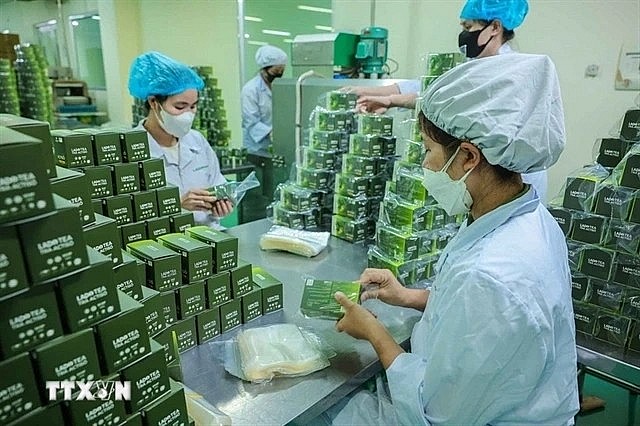 |
| Production of herbal-based products at Lam Dong Pharmaceutical JSC. (VNA/VNS Photo) |
Authorities also cite reasons such as manual and passive handling, lack of strict control, non-compulsory participation by businesses in traceability systems, poor integration between traceability and quality control, and the absence of a centralised database for goods evaluation and management.
A gateway to the world
Traceability and verification are an essential trend in the digital economy. Vietnam can fully leverage this to build a transparent, efficient, and globally competitive digital economy.
Bui Ba Chinh, acting director of the National Numbering and Barcodes Centre under the Ministry of Science and Technology, noted that countries like the US, Canada and EU member states have implemented full-chain traceability and product identification systems, from production to export. Vietnam can do the same by transparently declaring and monitoring products with public oversight.
Marion Chaminade, Agricultural Counsellor at the French Embassy, shared examples from France and the EU where traceability is mandatory for every component of a product or service, from farm to table, to ensure transparency. She highlighted the adoption of advanced technologies, including blockchain, as effective tools to reduce fraud and strengthen consumer trust.
Nguyen Huy, representing the National Data Association, observed that while many large Vietnamese companies already have authentication systems for their products, these are often not based on national or international standards and are typically limited to internal networks. Moreover, such systems often lack validation from state agencies.
According to Huy, this requires coordinated management from central to local levels, universal implementation across enterprises and international interoperability.
Vietnam's aviation among top 10 fastest-growing markets in Asia-Pacific: Boeing report
Vietnam's aviation industry is experiencing impressive growth, named among the top 10 fastest-growing markets in the Asia-Pacific region, according to Boeing’s latest Commercial Market Outlook (CMO).
The Southeast Asian nation is among the countries with the highest air transport growth rates in the region. The number of passengers traveling to, from, and within the country is projected to double within the next decade, reaching more than 75 million travelers annually.
The average annual growth rate of Vietnam's aviation sector is estimated at around 8.1 percent, a notable figure, especially given the global market's ongoing volatility.
The domestic market is expected to grow faster than the international one, reflecting the expansion of the flight network and the increasing demand for air travel within the country.
In just the first half of this year, the Vietnam Air Traffic Management Corporation (VATM) safely managed over 460,000 flights, an increase of nearly 9 percent compared to the same period last year. This figure highlights the growing demand for air traffic management while also placing significant pressure on airspace infrastructure, VGP reported.
 |
| Domestic passenger Terminal 3 at Tan Son Nhat International Airport located in Ho Chi Minh City.. |
The robust growth of Vietnam's aviation market is seen as a golden opportunity for businesses in air traffic control and aviation technical services.
The country's aviation infrastructure is also evolving to meet rising demand. The opening of Terminal 3 at Tan Son Nhat International Airport in Ho Chi Minh City and the anticipated launch of Long Thanh International Airport in Dong Nai Province by 2026 will unlock new opportunities for growth.
Vietnam's GDP is projected to reach over US$670 billion by 2029, advancing from the world's 37th to 29th largest economy. This economic ascent is expected to fuel demand not only for passenger aircraft but also for freighters. Southeast Asia is projected to require over 120 new or converted cargo aircraft by 2043, with Vietnam playing a critical role in regional air cargo logistics.
 | Vietnam News Today (Jul. 23): Vietnam Makes Remarkable Stride on Global AI Index Vietnam News Today (Jul. 23): Vietnam, Singapore forge Party ties and wide-ranging cooperation; Regional cooperation spurs green tourism for net zero future; Vietnam makes remarkable ... |
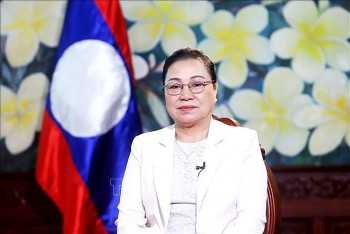 | Vietnam News Today (Jul. 24): Vietnam Makes Practical Contributions to Enhancing ASEAN's Global Standing Vietnam News Today (Jul. 24): Vietnam reaffirms commitment to the 2030 Agenda for Sustainable Development; Vietnam makes practical contributions to enhancing ASEAN's global standing; Tropical ... |










